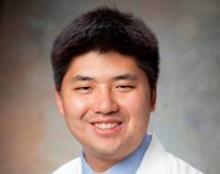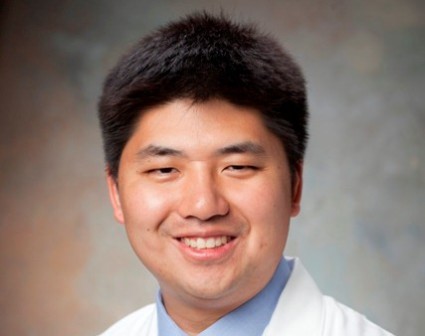User login
SAN DIEGO – Neurologists and neurology nurses predict 3-month functional outcomes following intracerebral hemorrhagic strokes better than do commonly used clinical scores, according to a prospective, observational study.
At each of the five centers participating in the study, the investigators asked one physician – usually a neurologist – and one neurology nurse on the treatment team to predict 3-month modified Rankin Scale (mRS) scores for primary intracerebral hemorrhagic (ICH) stroke patients under their care within 24 hours of admission.
The team then calculated the admission ICH score and FUNC score themselves based on imaging and other records. The results for all centers then were compared with actual 3-month mRS scores for the 100 patients included in the study.
With 1 representing a perfect correlation with actual 3-month mRS scores, the Spearman’s rank correlation for attending physicians was 0.81, for neurology nurses 0.72, for the ICH scale 0.55, and for the FUNC score –0.46 (negative because higher scores mean better outcomes).
To control for self-fulfilling prophecies among providers, the team ran the analysis again, excluding the 18 patients for whom comfort care was recommended early on. The results were similar: r = 0.78 for attendings, 0.66 for nurses, 0.48 for the ICH score, and –0.37 for the FUNC score. Results in both analyses were statistically significant. The accuracy advantage for physicians and nurses remained when predictions were examined for only the 35 patients who were alive at 3 months.
"Existing formal scales such as the ICH score and FUNC score are useful for providing general probabilities for outcomes among ICH [patient populations], but it is appropriate for trained neurologists and neuroscience nurses to use their best subjective judgment ... when counseling any individual ICH patient and their family," said lead investigator Dr. David Hwang, a neurointensivist in the neurology department at Yale University, New Haven, Conn.
The study findings matter because early predictions guide treatment. It’s the first time that stroke scores have been pitted against clinical judgment, he said at the International Stroke Conference, sponsored by the American Heart Association.
Seventy-five of the physicians were attendings, and 25% were trainees. Although attendings and neurology nurses significantly beat clinical scores, trainees did not. "The vast majority of physicians and nurses were specialists in neuroscience," Dr. Hwang noted.
Patents were, on average, 67 years old. The ICH involved a deep brain bleed in 53% and had a volume of less than 30 mL in 71%. Glasgow Coma Scale scores of 13-15 occurred in 64%.
"Our cohort contained a majority of well-appearing patients, with good exams and small bleeds," a potential limitation. But overall mortality at 3 months was 35%, which is comparable to results from large, published cohorts, Dr. Hwang said.
Even when the 18 comfort-care patients were excluded, "the self-fulfilling prophecy [may have had an] effect," but the team was trying to mimic real life in its work, where they "are the ones to figure out and give prognostic advice to patients and families," he said.
Dr. Hwang said he had no relevant disclosures. The study was funded by the American Heart Association and the National Institute of Neurological Disorders and Stroke.
SAN DIEGO – Neurologists and neurology nurses predict 3-month functional outcomes following intracerebral hemorrhagic strokes better than do commonly used clinical scores, according to a prospective, observational study.
At each of the five centers participating in the study, the investigators asked one physician – usually a neurologist – and one neurology nurse on the treatment team to predict 3-month modified Rankin Scale (mRS) scores for primary intracerebral hemorrhagic (ICH) stroke patients under their care within 24 hours of admission.
The team then calculated the admission ICH score and FUNC score themselves based on imaging and other records. The results for all centers then were compared with actual 3-month mRS scores for the 100 patients included in the study.
With 1 representing a perfect correlation with actual 3-month mRS scores, the Spearman’s rank correlation for attending physicians was 0.81, for neurology nurses 0.72, for the ICH scale 0.55, and for the FUNC score –0.46 (negative because higher scores mean better outcomes).
To control for self-fulfilling prophecies among providers, the team ran the analysis again, excluding the 18 patients for whom comfort care was recommended early on. The results were similar: r = 0.78 for attendings, 0.66 for nurses, 0.48 for the ICH score, and –0.37 for the FUNC score. Results in both analyses were statistically significant. The accuracy advantage for physicians and nurses remained when predictions were examined for only the 35 patients who were alive at 3 months.
"Existing formal scales such as the ICH score and FUNC score are useful for providing general probabilities for outcomes among ICH [patient populations], but it is appropriate for trained neurologists and neuroscience nurses to use their best subjective judgment ... when counseling any individual ICH patient and their family," said lead investigator Dr. David Hwang, a neurointensivist in the neurology department at Yale University, New Haven, Conn.
The study findings matter because early predictions guide treatment. It’s the first time that stroke scores have been pitted against clinical judgment, he said at the International Stroke Conference, sponsored by the American Heart Association.
Seventy-five of the physicians were attendings, and 25% were trainees. Although attendings and neurology nurses significantly beat clinical scores, trainees did not. "The vast majority of physicians and nurses were specialists in neuroscience," Dr. Hwang noted.
Patents were, on average, 67 years old. The ICH involved a deep brain bleed in 53% and had a volume of less than 30 mL in 71%. Glasgow Coma Scale scores of 13-15 occurred in 64%.
"Our cohort contained a majority of well-appearing patients, with good exams and small bleeds," a potential limitation. But overall mortality at 3 months was 35%, which is comparable to results from large, published cohorts, Dr. Hwang said.
Even when the 18 comfort-care patients were excluded, "the self-fulfilling prophecy [may have had an] effect," but the team was trying to mimic real life in its work, where they "are the ones to figure out and give prognostic advice to patients and families," he said.
Dr. Hwang said he had no relevant disclosures. The study was funded by the American Heart Association and the National Institute of Neurological Disorders and Stroke.
SAN DIEGO – Neurologists and neurology nurses predict 3-month functional outcomes following intracerebral hemorrhagic strokes better than do commonly used clinical scores, according to a prospective, observational study.
At each of the five centers participating in the study, the investigators asked one physician – usually a neurologist – and one neurology nurse on the treatment team to predict 3-month modified Rankin Scale (mRS) scores for primary intracerebral hemorrhagic (ICH) stroke patients under their care within 24 hours of admission.
The team then calculated the admission ICH score and FUNC score themselves based on imaging and other records. The results for all centers then were compared with actual 3-month mRS scores for the 100 patients included in the study.
With 1 representing a perfect correlation with actual 3-month mRS scores, the Spearman’s rank correlation for attending physicians was 0.81, for neurology nurses 0.72, for the ICH scale 0.55, and for the FUNC score –0.46 (negative because higher scores mean better outcomes).
To control for self-fulfilling prophecies among providers, the team ran the analysis again, excluding the 18 patients for whom comfort care was recommended early on. The results were similar: r = 0.78 for attendings, 0.66 for nurses, 0.48 for the ICH score, and –0.37 for the FUNC score. Results in both analyses were statistically significant. The accuracy advantage for physicians and nurses remained when predictions were examined for only the 35 patients who were alive at 3 months.
"Existing formal scales such as the ICH score and FUNC score are useful for providing general probabilities for outcomes among ICH [patient populations], but it is appropriate for trained neurologists and neuroscience nurses to use their best subjective judgment ... when counseling any individual ICH patient and their family," said lead investigator Dr. David Hwang, a neurointensivist in the neurology department at Yale University, New Haven, Conn.
The study findings matter because early predictions guide treatment. It’s the first time that stroke scores have been pitted against clinical judgment, he said at the International Stroke Conference, sponsored by the American Heart Association.
Seventy-five of the physicians were attendings, and 25% were trainees. Although attendings and neurology nurses significantly beat clinical scores, trainees did not. "The vast majority of physicians and nurses were specialists in neuroscience," Dr. Hwang noted.
Patents were, on average, 67 years old. The ICH involved a deep brain bleed in 53% and had a volume of less than 30 mL in 71%. Glasgow Coma Scale scores of 13-15 occurred in 64%.
"Our cohort contained a majority of well-appearing patients, with good exams and small bleeds," a potential limitation. But overall mortality at 3 months was 35%, which is comparable to results from large, published cohorts, Dr. Hwang said.
Even when the 18 comfort-care patients were excluded, "the self-fulfilling prophecy [may have had an] effect," but the team was trying to mimic real life in its work, where they "are the ones to figure out and give prognostic advice to patients and families," he said.
Dr. Hwang said he had no relevant disclosures. The study was funded by the American Heart Association and the National Institute of Neurological Disorders and Stroke.
AT THE INTERNATIONAL STROKE CONFERENCE
Major finding: With 1 representing a perfect correlation with actual 3-month mRS scores, the Spearman’s rank correlation for ICH functional outcomes predicted by attending physicians was 0.81, for predictions by neurology nurses 0.72, for ICH scale score predictions 0.55, and for the FUNC score –0.46.
Data Source: A prospective, observational study in 100 ICH patients.
Disclosures: Dr. Hwang said he had no relevant disclosures. The study was funded by the American Heart Association and the National Institute of Neurological Disorders and Stroke.

